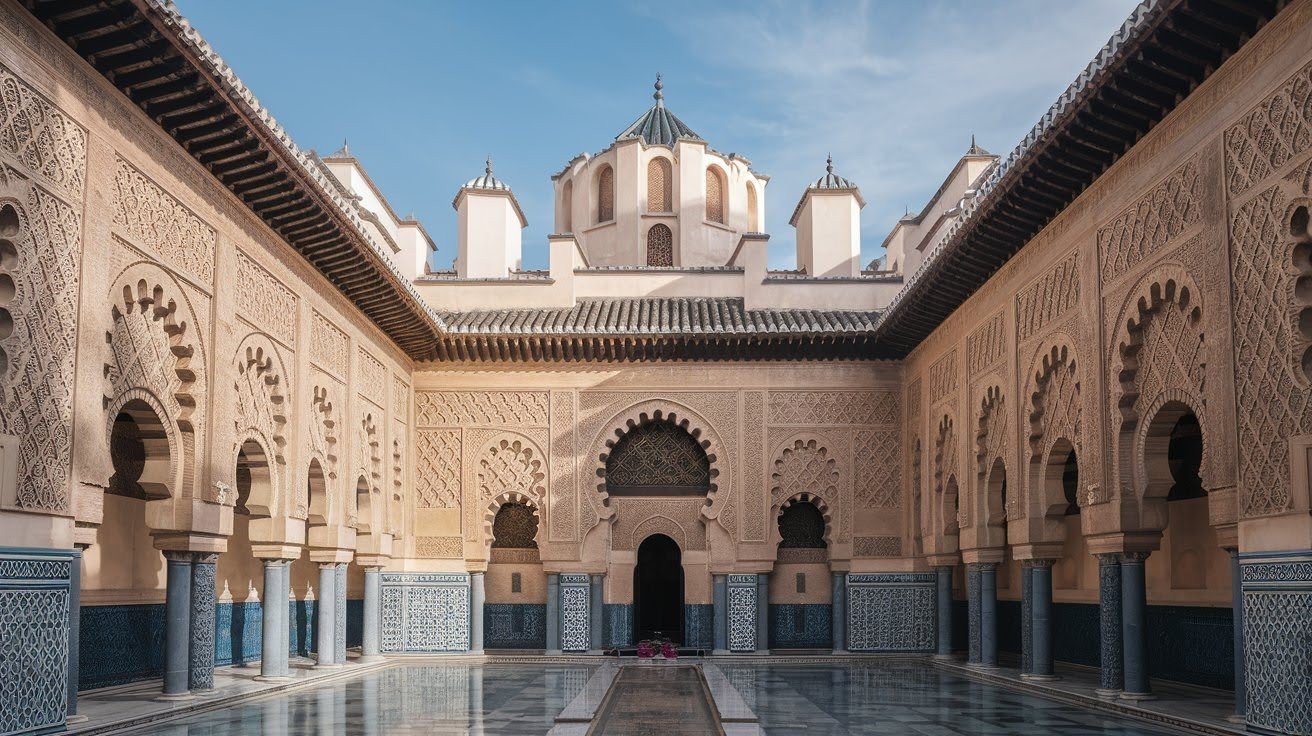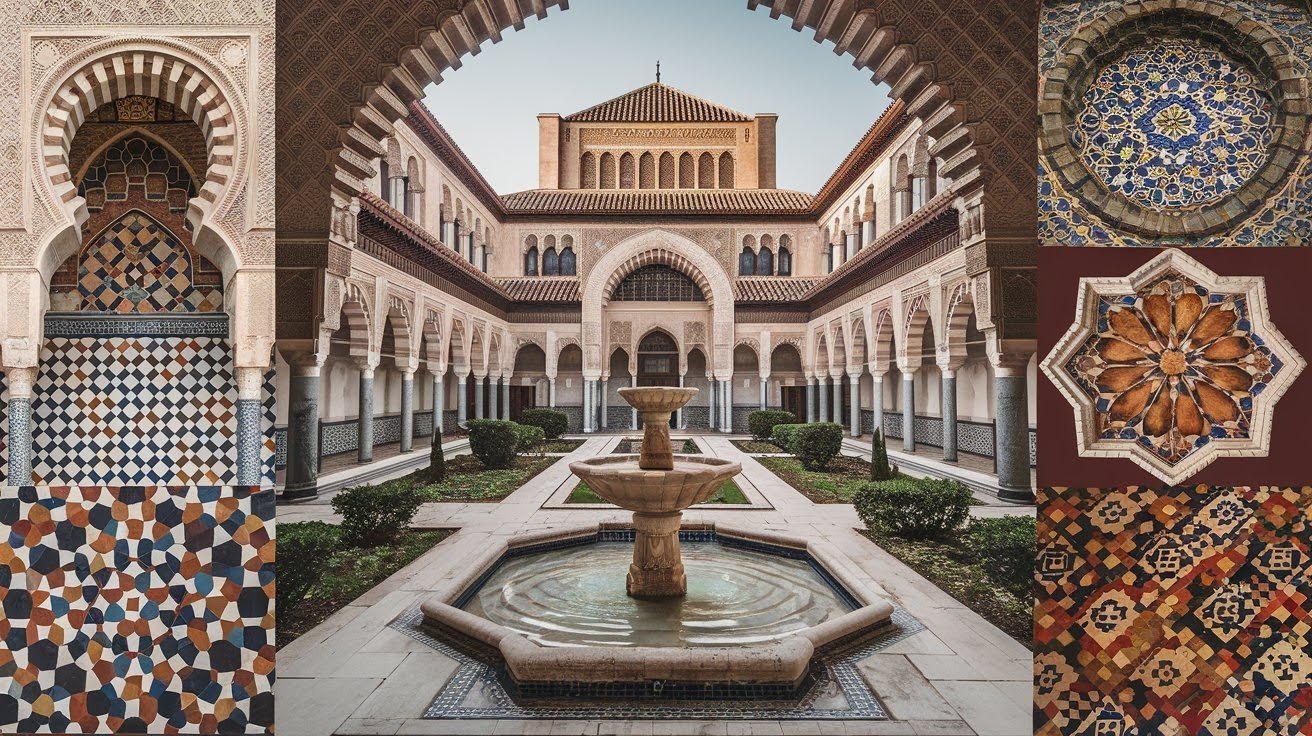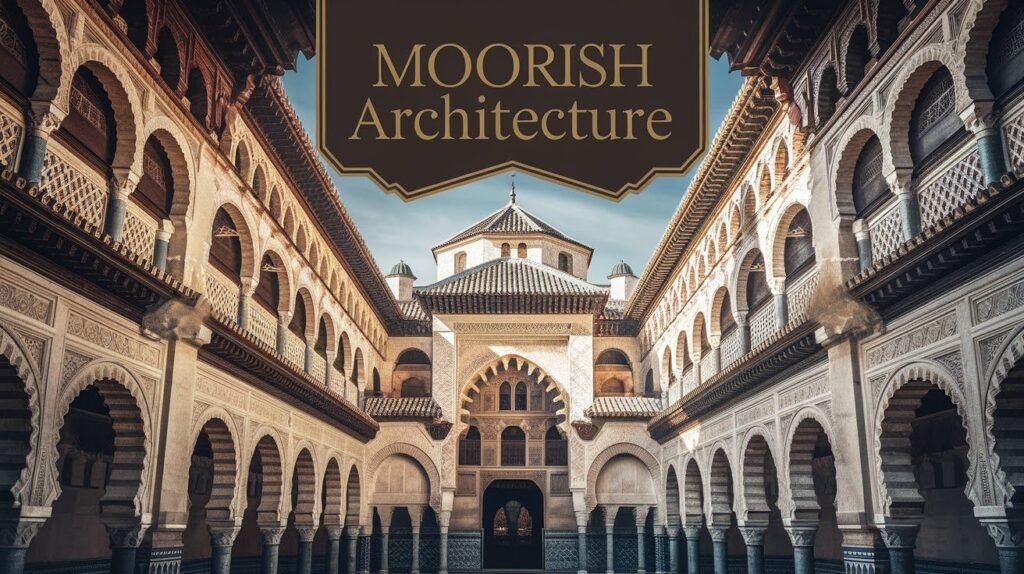You’ve seen those arches in Spanish palaces. The intricate tile patterns that seem to go on forever. The peaceful courtyards with flowing water. That’s Moorish architecture.
What exactly makes it special? This guide will show you everything you need to know. I’ll walk you through the history, key features, and world-famous examples like the Alhambra Palace. You’ll learn how this 1,000-year-old style still influences modern buildings today.
Here’s what you’ll learn: The origins and historical context of Moorish design, key architectural features that define the style, iconic buildings you can visit around the world and how to incorporate Moorish elements in your own space. I’ve spent years studying Islamic architecture and visited these historic sites personally. You can trust this information to be accurate and practical.
By the end, you’ll recognize Moorish architecture anywhere and understand why it fascinates people worldwide.
Moorish Architecture: Islamic Spain’s Architectural Legacy

The Moors arrived in Spain in 711 CE. They weren’t just conquerors. They were builders, artists, and innovators who created one of history’s most recognizable architectural styles.
The Moors came from North Africa, bringing Islamic culture to Spain. For nearly eight centuries, they ruled parts of what we now call Spain and Portugal. The architectural style flourished from the 8th to 15th centuries, blending Islamic traditions with local Spanish and Roman influences.
Cities like Córdoba became centers of learning and art. Engineers developed new building techniques. Craftsmen perfected decorative arts that still amaze us today.
Key Features of Moorish Architecture

Horseshoe Arches
These aren’t your typical Roman arches. Horseshoe arches curve inward at the bottom, creating a graceful horseshoe shape. They became the signature element of Moorish design.
Geometric Patterns
Islamic art avoids showing living creatures. Instead, artists created complex geometric designs. These patterns cover walls, ceilings, and floors in mesmerizing repetitions.
Muqarnas (Honeycomb Vaulting)
Look up in a Moorish building. You’ll often see muqarnas – three-dimensional decorative vaulting that resembles a honeycomb.
Courtyards and Water Features
Moorish builders designed central courtyards with fountains, pools, and gardens. Water provided cooling in hot Spanish summers.
Colorful Tilework (Azulejos)
Those beautiful blue and white tiles you see in Spanish buildings? That’s azulejo work, perfected by Moorish craftsmen using mathematical principles.
Iconic Examples Around the World
![]()
Alhambra Palace (Spain)
The Alhambra in Granada showcases Moorish architecture at its peak. The Court of Lions features 124 marble columns supporting horseshoe arches. Water flows through channels carved into the courtyard floor.
Mezquita of Córdoba (Spain)
The Great Mosque of Córdoba features 856 columns supporting red and white striped arches. After the Christian conquest, they built a cathedral inside without destroying the original structure.
Koutoubia Mosque (Morocco)
This 12th-century mosque in Marrakech shows Moorish architecture in its North African home. Its 70-meter minaret follows mathematical proportions.
Medersa Bou Inania (Fez)
This religious school in Fez represents the pinnacle of Marinid architecture with cedar wood carvings, marble columns, and zellij tilework.
Giralda Tower (Seville)
Originally a minaret, the Giralda became a bell tower after the Christian conquest. It features ramps instead of stairs, allowing guards to ride horses to the top.
Influence on Global Architecture
Moorish architecture traveled worldwide. European builders created Neo-Moorish structures during the 19th century. Spanish colonizers brought Moorish elements to the Americas, creating the Mudéjar style.
Contemporary builders still draw inspiration from Moorish design principles in resort hotels and residential projects.
Preservation and Challenges in the Modern Age
Preserving 1,000-year-old buildings faces modern challenges. Climate change damages traditional materials. Tourism pressure wears away original elements. Authentic restoration requires specialized craftsmen and funding.
Success stories include the Alhambra Trust’s 3D documentation and UNESCO World Heritage protection.
Moorish vs Islamic Architecture: What’s the Difference?
Islamic architecture encompasses building styles from the entire Muslim world. Moorish architecture specifically refers to the style that developed in medieval Spain and North Africa.
Moorish architecture used local materials like limestone and marble. It adapted to Spanish and North African climates with central courtyards and thick walls.
Incorporating Moorish Design in Contemporary Spaces
You can add Moorish elements to your space without a palace budget. Start with horseshoe arches as doorway frames or decorative niches. Add geometric tiles in bathrooms or kitchens. Include small water features and pierced metal lanterns.
Use authentic Moorish colors like earth tones, deep blues, and metallic accents. Choose furniture with geometric patterns and brass accessories.
Conclusion
Moorish architecture is more than beautiful buildings. It’s a design philosophy that connects us to history.
You now understand the key elements that make this style special. The horseshoe arches, geometric patterns, and peaceful courtyards all work together. They create spaces that feel both grand and welcoming.
This knowledge changes how you see the world. You’ll spot Moorish influences in hotels, museums, and homes everywhere. Those intricate tiles in your favorite restaurant? The arched doorway in that resort? Now you know their story.
The Moors left Spain centuries ago. But their architectural vision lives on. Modern designers still draw inspiration from these ancient principles. If you visit the Alhambra or add geometric tiles to your bathroom, you’re connecting with a tradition that spans continents and centuries. That’s the true power of great architecture.
Frequently Asked Questions
What colors are most common in Moorish architecture?
Earth tones are everywhere in Moorish design, including warm browns, ochres, and terra cottas from local materials. Deep blues, rich reds, and metallic accents in gold and bronze complete the traditional palette.
Can I visit the Alhambra without booking in advance?
No, you must book tickets ahead of time as the Alhambra limits daily visitors to protect the historic structure. During peak season, tickets often sell out weeks in advance.
What’s the difference between Moorish and Mudéjar architecture?
Moorish architecture was built by Muslim rulers in medieval Spain and North Africa. Mudéjar style emerged later when Christian rulers employed Muslim craftsmen to create buildings with Islamic decorative elements.
How long did it take to build the Alhambra Palace?
Construction spanned over 150 years from the 13th to 14th centuries under different Nasrid rulers. Each generation added new sections and refined existing areas of the palace complex.
Are there Moorish buildings outside Spain and Morocco?
Yes, Neo-Moorish revival buildings exist worldwide from the 19th century onward. You’ll find examples in England, the United States, India, and throughout former Spanish colonies in Latin America.


